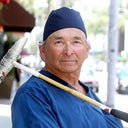Hi Doctors: I've researched from thousands of these forums and there seems to be a preference from Western doctors to use cartilage for the bridge because silicone has a high infection and complication rate. However, the east disagrees and there's evidence that shows that silicone is best for Asians. Upon further investigation, I realized that Westerners have been used HARD silicone for the bridge with terrible results. Are any doctors on this forum familiar with SOFT silicone for the bridge?
Answers (8)
From board-certified doctors and trusted medical professionals
Dr. Edward J. Gross, MD

Dr. Edward J. Gross, MD
Board Certified Facial Plastic Surgeon
Answer
Dr. Kenneth Hughes, MD

Dr. Kenneth Hughes, MD
Board Certified Plastic Surgeon
Answer
Dr. Toby Mayer, MD

Dr. Toby Mayer, MD
Board Certified Facial Plastic Surgeon
Answer
Dr. Benjamin Chu, MD, FACS
Dr. Benjamin Chu, MD, FACS
Board Certified Plastic Surgeon
Answer
Dr. Kimberly Lee, MD
Dr. Kimberly Lee, MD
Facial Plastic Surgeon, Board Certified in Otolaryngology – Head and Neck Surgery
Answer
Dr. David Reinstadler, MD
Dr. David Reinstadler, MD
Board Certified Facial Plastic Surgeon
Answer
Dr. Frederic H. Corbin, MD (license restricted)
Dr. Frederic H. Corbin, MD (license restricted)
Board Certified Plastic Surgeon
Answer
Dr. Richard W. Fleming, MD (retired)
Dr. Richard W. Fleming, MD (retired)
Board Certified Facial Plastic Surgeon
Answer
More Rhinoplasty Questions
See all Rhinoplasty Q&AWE SEND PRETTY
EMAILS
What’s trending? Who’s turning heads? Which TikTok myths need busting? We’ve got you. No fluff, no gatekeeping—just real talk. Get our free, unfiltered newsletter.